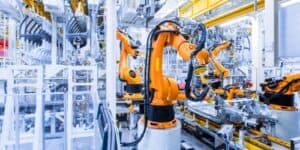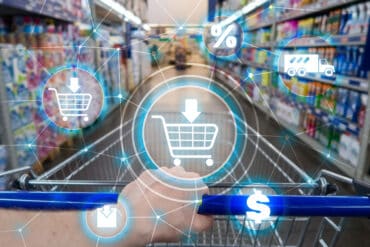
vPLCs offer a shift from traditional hardware-dependent systems to software-centric solutions. Industry analysts expect them to gain traction in the coming years.
Programmable Logic Controllers (PLCs) are essential for industrial automation, offering reliability, scalability, and adaptability in a wide range of environments. In particular, they function as the foundational technology to automate and manage various manufacturing and industrial processes. However, industrial companies face several challenges with current PLCs. Those challenges are opening the door for the use of newer virtual PLC (vPLC) technology.
To better understand the importance of PLCs and why their shortcomings are an issue, it is worth noting they are widely used for process automation in assembly lines, machine control in factories, energy management, and real-time monitoring.
Additionally, PLCs are often integrated with industrial systems to enhance overall functionality. For instance, they frequently act as a layer between sensors/actuators and high-level software systems (e.g., Manufacturing Execution Systems or SCADA). To do this, they use industrial communications protocols to connect with other PLCs or devices throughout a facility.
Limitations of current PLCs
Industrial companies face several challenges with current Programmable Logic Controllers (PLCs) despite their widespread use in automation.
For example, there can be hardware dependency issues. Traditional PLCs are often tied to specific hardware and proprietary ecosystems, limiting flexibility in choosing vendors or integrating with other systems. That can lead to vendor lock-in.
There are often integration difficulties. Many organizations still operate legacy equipment, and integrating modern PLCs with older systems can be complex and costly. Additionally, older PLCs may lack the connectivity and computational power needed as industrial companies adopt Industry 4.0 strategies and IIoT technologies.
Some organizations find that their existing PLCs present performance limitations. To that point, some PLCs are unable to meet the high-speed processing requirements of modern applications, particularly in industries with real-time control needs. And many older PLCs are not optimized for handling large volumes of data, which is a growing need in data-driven industrial environments.
Older PLCs may also introduce security risks. As PLCs become more connected to broader networks, the potential for unauthorized access increases. As such, PLCs are increasingly targeted in cyberattacks.
Many PLCs also have a lack of flexibility. Traditional PLC programming is often rigid, requiring specialized skills in older programming languages. Adapting PLCs to new processes or reconfiguring them for different tasks can be time-consuming.
See also: The Role of Industrial Connectivity in Enabling AI-powered Operations
Enter Virtual PLCs (vPLCs)
A recent report by IoT Analytics, a global provider of market insights and strategic business intelligence for the IoT, AI, Cloud, Edge, and Industry 4.0, discussed vPLCs. The report noted that vPLCs decouple control logic from specific hardware, enabling centralized management and enhanced flexibility. That can be a transformative force in industrial automation, as vPLCs offer a shift from traditional hardware-dependent systems to software-centric solutions.
What exactly are vPLCs? They are software-based PLCs that operate in virtualized environments like the cloud, edge servers, or industrial PCs. They leverage containerization and hypervisor technologies to deploy control logic independently of the underlying hardware.
The report also noted that early adopters of vPLCs are driven to use them for several reasons, including:
- Operational Improvement: vPLCs offer centralized management, which simplifies updates and provides unified access to PLC data.
- Flexibility: Decoupling software from hardware reduces vendor lock-in, allowing for customized application deployment without reliance on specific tools.
- Cost Efficiency: Consolidating multiple PLCs onto a single hardware platform reduces hardware expenditures and lowers replacement costs, as non-proprietary hardware can be utilized.
IoT Analytics expects vPLCs to gain traction in the coming years. However, they are unlikely to be the industry norm by 2030.







